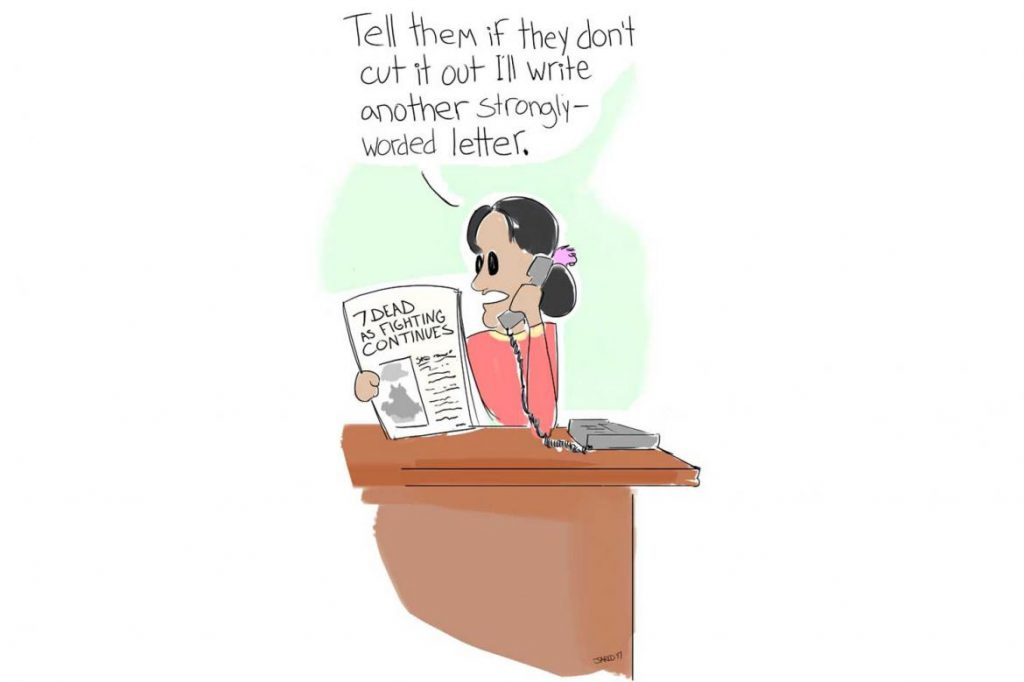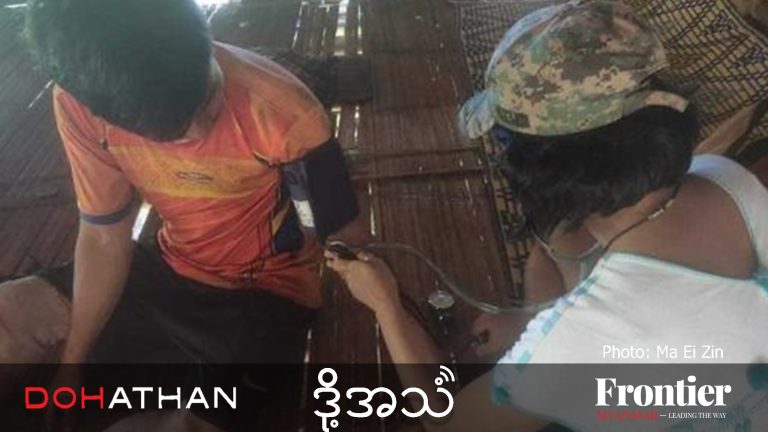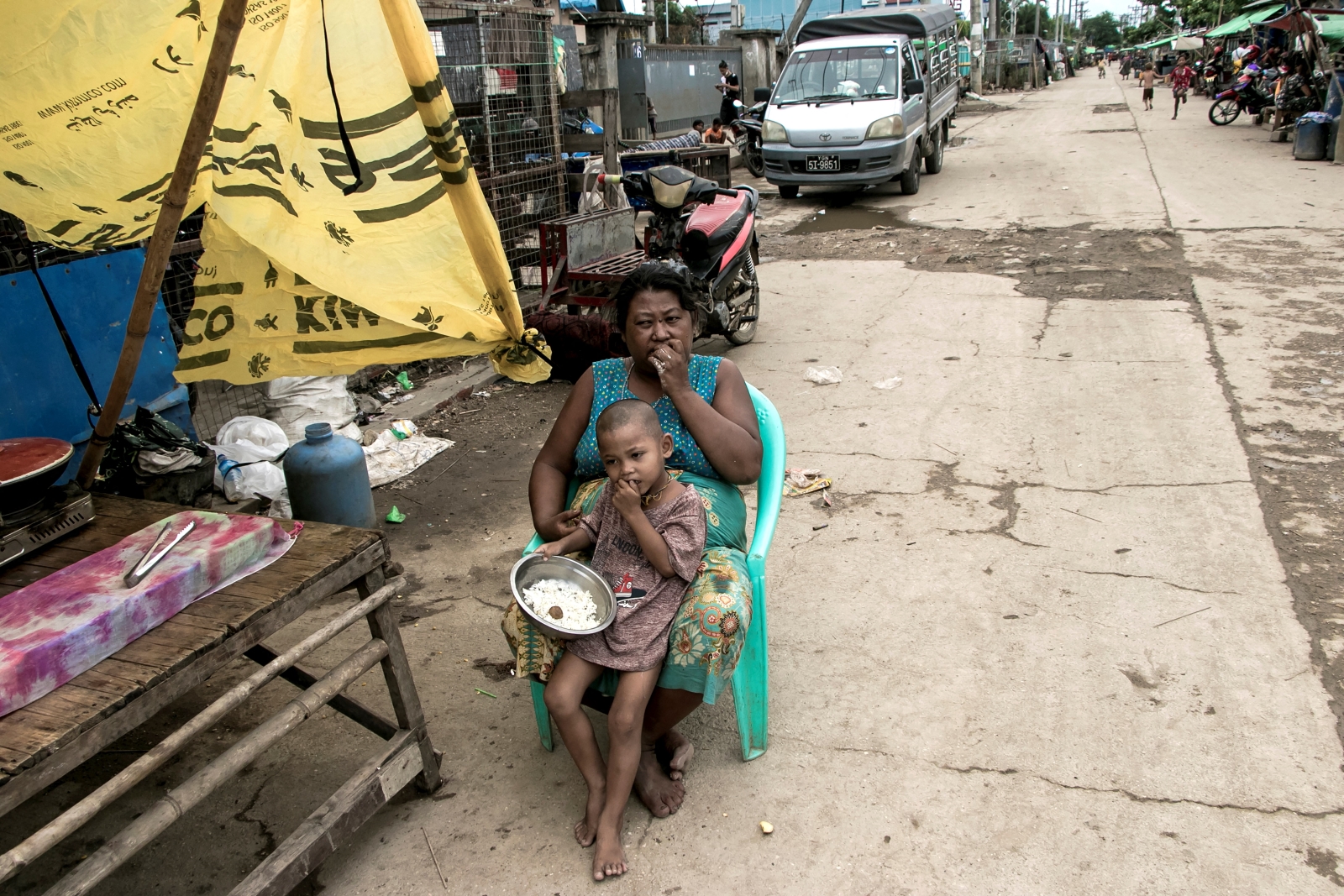The gulf in trust between ethnic armed groups and the government are evidence that much more is needed than just showcase events.
THE PEACE process is at a low ebb – perhaps its lowest point since the U Thein Sein administration breathed new life into it shortly after taking office.
In one of her first major speeches after the National League for Democracy swept the polls in the 2015 general election, Daw Aung San Suu Kyi promised to make peace her first priority. Given her party’s impressive mandate and the international community’s support for her there was reason to be optimistic.
The state counsellor has personally taken control of the peace process, appointing herself chairperson of the National Reconciliation and Peace Centre, a slimmed-down version of the Myanmar Peace Center that was established under Thein Sein.
But developments since the NLD took office have raised questions about Aung San Suu Kyi’s approach to the peace process. Her main achievement has been convening the 21st Century Panglong Union Peace Conference, the first of which was held in August 2016, and the second due to take place within the next month.
But the gulf in trust between the ethnic armed groups and the central government are evidence that much more is needed than just these showcase events.
Support more independent journalism like this. Sign up to be a Frontier member.
The second peace conference under the NLD government was originally scheduled for February 28, but late in the month U Zaw Htay told Frontier the date would be pushed back to give the government more time to secure the participation of non-signatories to the Nationwide Ceasefire Agreement. At the time of writing, it seemed likely that only signatories would attend.
Yet there are concerns that even this low bar may not be reached.
In early February, NCA signatory the Chin National Front said it was considering boycotting the next Panglong conference due to the government’s inability to organise a political dialogue meeting in Chin State.
The government has now agreed to hold the talks in the mountainous state in late February. It is a positive step but also worth asking why it required such a drastic measure – the threat of a boycott – to finally organise the meeting.
The government must take seriously the wishes of all Myanmar’s ethnic armed groups, both signatories and non-signatories. If any signatories walk away from the ceasefire and Panglong, then it will throw an already beleaguered process into even greater jeopardy.
Speaking on the occasion of the 70th Union Day in Panglong, Shan State, on February 12, Aung San Suu Kyi urged all armed groups to “rewrite history” by signing the NCA.
But it is understandable that many still refuse to heed her advice. Take the Kachin Independence Army as an example: The Tatmadaw seems intent on using overwhelming military strength to force its long-time foe into signing the agreement.
It is an approach that is doomed to fail. The KIA, and many Kachin people, have a deep distrust for the Tatmadaw. They also have the support of other groups operating in the north of the country, and the terrain in Kachin is perfect for a long, drawn-out, guerrilla-style war should it come to that. Any prolonged conflict there would only heap more pain and misery on the country’s population.
There remain gaps in understanding between the ethnic armed groups’ desires for what federalism in Myanmar looks like, and what the Tatmadaw perceives those wishes to be. Some sources have told Frontier that the military believes ethnic minorities are demanding full autonomy from the Union. That is not the case, at least for most of them. The only way to close these gaps in understanding is to promote consistent dialogue between all parties.
It’s not all doom and gloom, though. The government’s decision to postpone the Panglong conference suggests a degree of flexibility that it had not previously exhibited. It also indicates that it has recognised the importance of listening to all peace stakeholders when trying to end the decades of conflict the people of this country have endured.
Much more of the same is needed.
This editorial originally appeared in the February 23 issue of Frontier.







